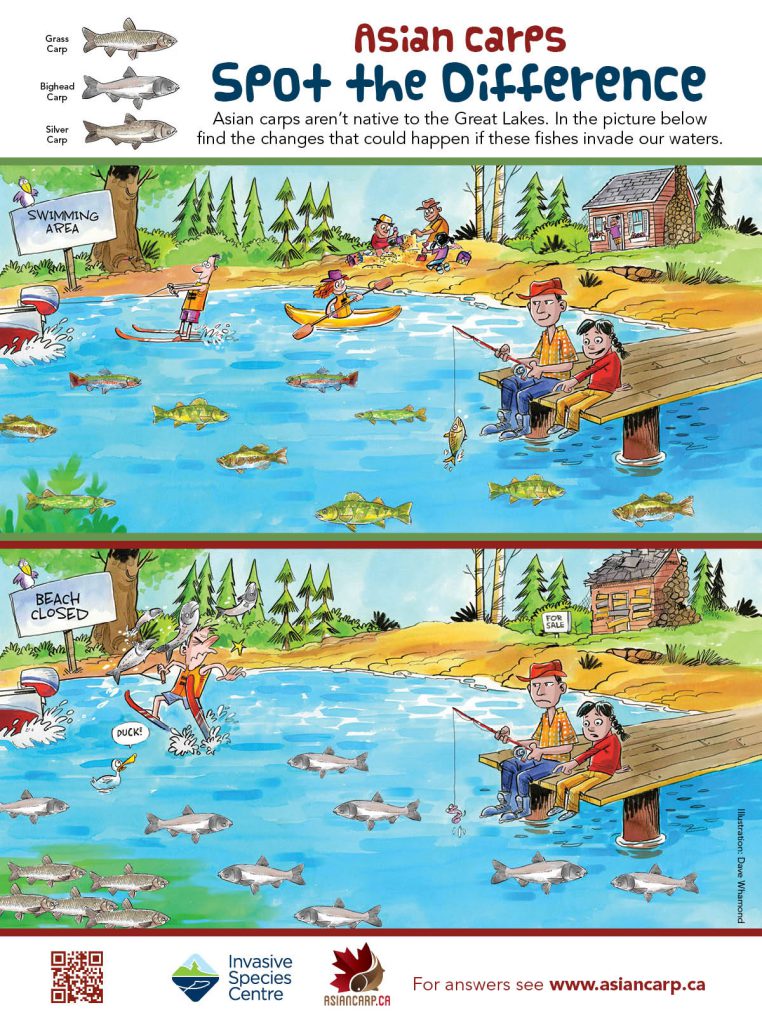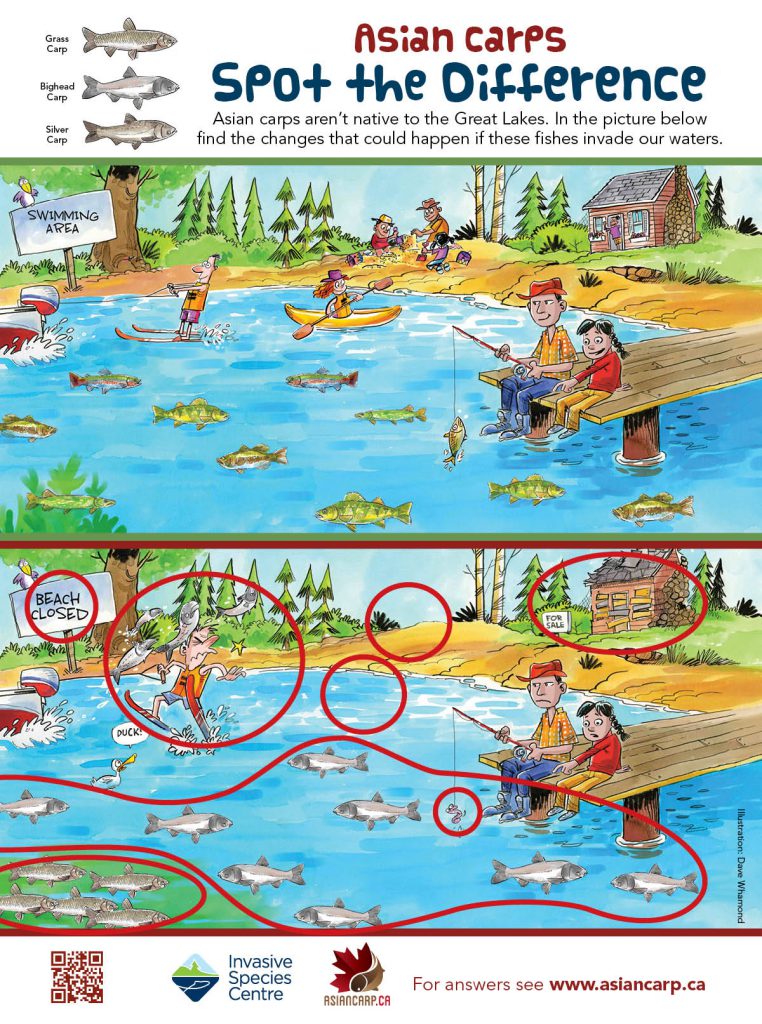Can you spot the differences that Asian carps could cause?
Once you think you’ve found all of the differeneces, scroll down to see the answers and find out more!
Have you found all the differences that Asian carps can cause?
Asian carps are four different types of fishes: Bighead Carp, Silver Carp, Grass Carp and Black Carp. These fishes are from a similar fish family as minnows. They originally came from the rivers and lakes in China and southern Russia. All four types of these fishes were brought to North America over forty years ago to control algae, plants and snails in fish farms. Plants and algae produce oxygen during the day and consume it at night. In a fish pond, when there is too much algae and plant growth, they will use up a lot of oxygen at night and leave little for the fishes to survive. The Asian carps eat the plants, algae and snails to prevent them from overgrowing in the ponds.
During years when there was lots of rain, the fish farms flooded and some of the Asian carps escaped their enclosures. These fishes are now the most common type of fish in many areas of the Mississippi waterway system in the United States.
The differences explained
1. Bighead and Silver Carp can take over a fish neighborhood and become the main fish in some lakes and rivers. They eat lots and lots of food every day, leaving far less of the small plants and animals (plankton) for the native fishes. This means that the only fish you would be likely to see in invaded waters are Bighead and Silver Carp.
2. Many Canadians enjoy fishing in the Great Lakes. If Bighead or Silver Carp establish in an area, they would crowd out the native fishes and eat most of the food that the juvenile (baby) native fish eat. Since the Bighead and Silver Carp feed mostly on very small organisms in the water, they would not be attracted to the bait that is used on a fishing line and are rarely caught this way. That means you wouldn’t be likely to see people fishing on invaded lakes.
3. When startled by boat motors, Silver Carp jump up to 3 metres out of the water. This can harm boaters and water skiers, even causing broken bones and head injuries. This makes it difficult or impossible for families to enjoy the waterways where Asian carps have invaded.
4. Because Silver Carp can cause serious injuries, they make lakes and rivers a bad place to swim and this could lead to beach closures.
5. Grass Carp mainly eat aquatic plants and their eating habits can disturb lake and river bottoms and destroy wetlands. This can also cause the water to become murky which makes it more difficult for other fish to find food. The loss of aquatic plants also leaves small native fishes without a place to hide from bigger fish that want to eat them.
6. The murky water caused by Grass Carp will make people less likely to use the lake for fun water sports like kayaking
7. Because Asian carps cause people to stay out of the water, they also will not likely want to spend time near those shores. This means less families will go to those beaches.
8. People might sell their camps and cottages because they can’t enjoy the same water activities they did before the Asian carps arrived.
Spread the word, not the fish!
Asian carps have not made the Great Lakes their home yet. We want to make sure they don’t!
One of the best ways you can help is to share what you learned about Asian carps with your friends and family. The more people who know about what can happen if Asian carps get into in the Great Lakes, the more we can help protect our Canadian waterways from these fishes.
Browse through the Asian Carp Canada website to learn more about Asian carps and what is being done to prevent them from getting into the Great Lakes.
Also, anyone who finds or catches a fish in the Great Lakes that might be an Asian carp should report it immediately at the Invading Species Hotline, 1-800-563-7711 or www.eddmaps.org/ontario.

